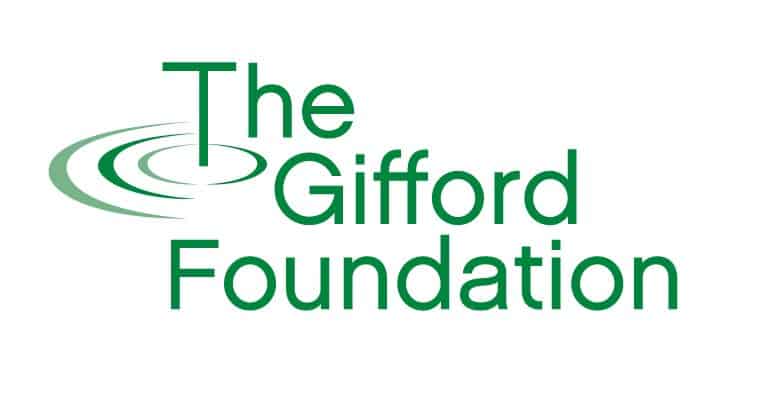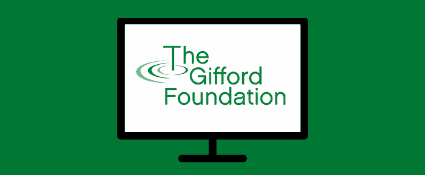Stone Quarry Hill Art Park: Building Capacity By Prioritizing Artists
Published February 8th, 2023, By Maximilian Eyle
Founded in 1991, Stone Quarry Hill Art Park has been drawing audiences to its scenic Cazenovia setting for more than 30 years. Over the course of its history, their mission of providing outdoor access to contemporary art has remained relatively constant. Their story is a reminder that although an organization’s mission is unlikely to shift dramatically over time, the methodologies and structures that support that mission are always open to revision.
Stone Quarry had primarily been concerned with growing their public: a focus on events and attracting new visitors took up much of their resources although they were struggling to gain significant traction.
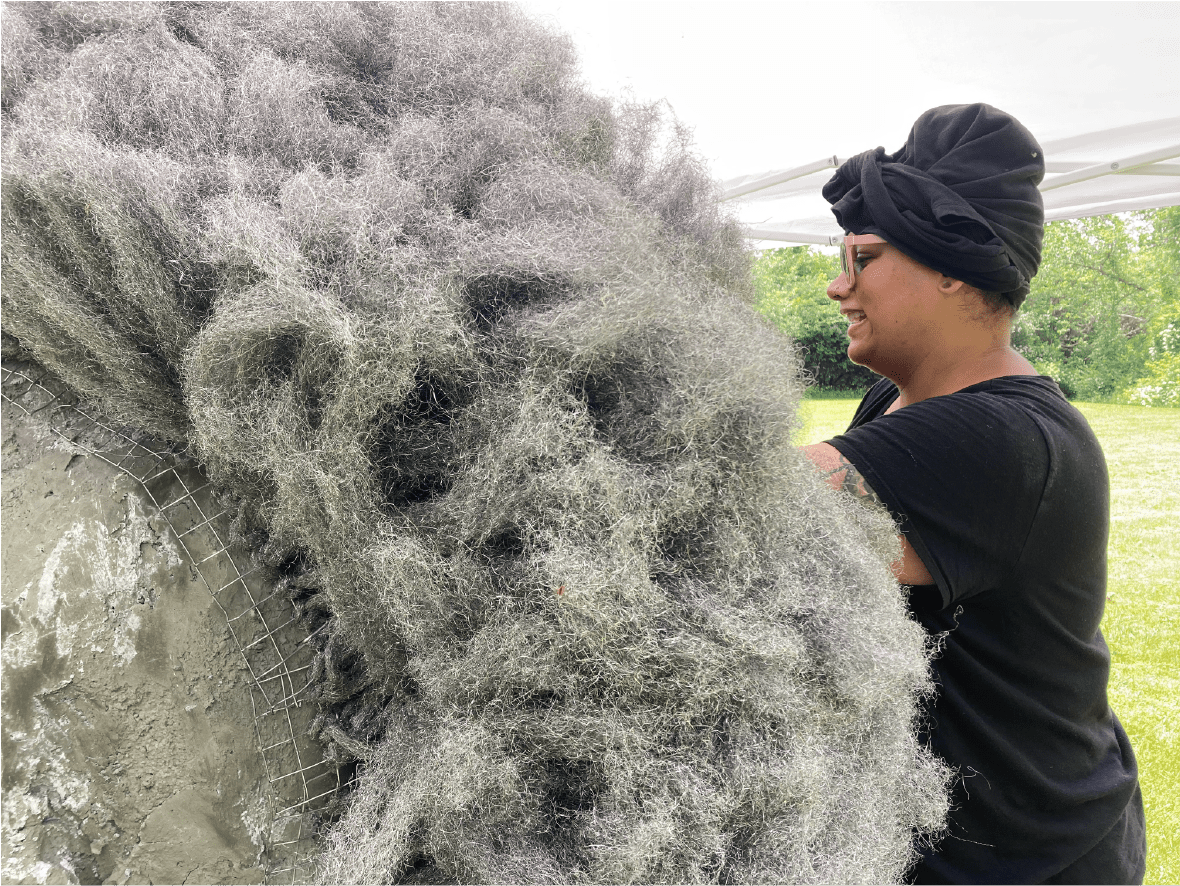
An exhibit by visiting artist Jen Dawson. ‘Super Natural’ is composed of cement, wire mesh, and braided and patinated steel wool.
Things began to shift when their leadership noticed something troubling about the Art Park’s operations: everything that Stone Quarry offered depended on their artists in residence, yet that aspect of their programming was in decline. “Although it has been operating for 30 years, our artist residency program has been largely invisible as the core of the organization,” says CEO Emily Zaengle. This became especially apparent when they began to see that conducting open artist calls was not yielding diverse and plentiful applications.
By placing artists at the center of their focus, Stone Quarry is betting on the idea that the benefits of this practice will bleed over into the other areas of their work by creating larger and more diverse audiences, improving the quality and scope of their outdoor exhibitions, and creating a more sustainable and welcoming culture within the organization. “At the end of the day, everything else about our organization is a result of us working with visiting artists,” says Zaengle. One of the first operational changes they implemented was to move from an open application process to an invitation-only approach. This practice provided a range of immediate benefits, including facilitating more cohesive exhibits, growing the diversity of the artists in residency, and eliminating the application burden on the artists themselves.
To aid in this process, Stone Quarry’s Artistic Director Sayward Schoonmaker created an art advisory committee. This group is composed of artists and art professionals who are otherwise unaffiliated with Stone Quarry. They nominate a group of artists to participate in the visiting artist program and then Schoonmaker sends out the invitations.
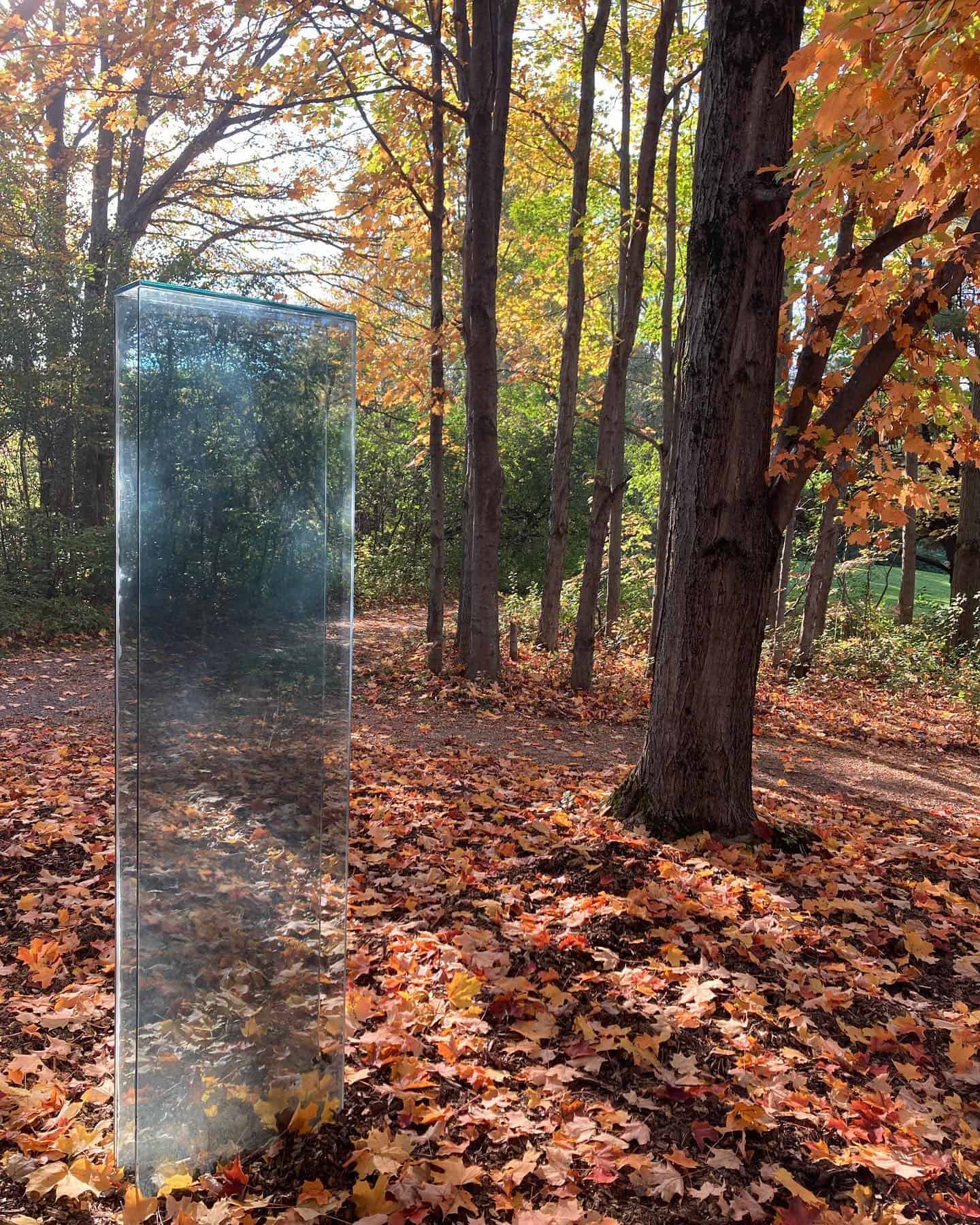
Fallen leaves reflecting in John Fitzsimmons’ The Island, tempered glass, 2021
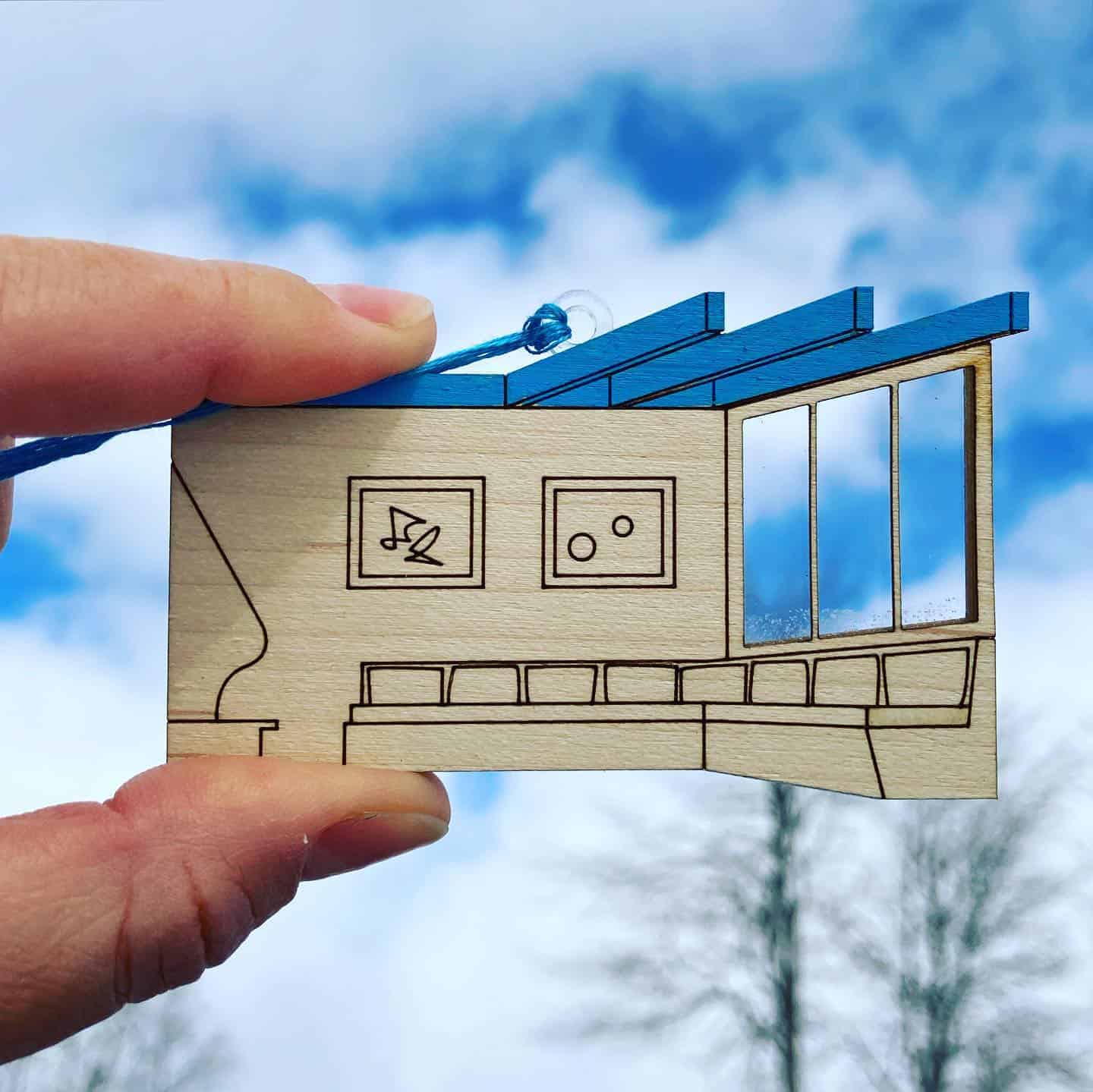
An original work by miniaturist artist ChelseaMakes, inspired by the Hilltop House located at Stone Quarry Art Park.
“Overall we have had great numbers,” she says. “I can only think of two who have said no, and it was for good reasons: their careers were taking off and their schedules were booked.”
Updating their artist recruitment strategy is not the only operational change that has resulted from this shift in philosophy. From Stone Quarry’s approach to maintaining the 104-acre site to the design of their office environment, Zaengle and Schoonmaker are applying new artist centered practices. “We are constantly asking ourselves, in every decision, every opportunity, every collaboration, how does this advance, support, bring visibility to a visiting artist?” When selecting contractors for the buildings and grounds, Stone Quarry has begun prioritizing those with artistic backgrounds. They have also made efforts to ensure that food is never out of reach.
“One organizational shift is that we have a lot more snacks around. The artists love them particularly,” says Schoonmaker with a laugh. “It’s important to think about the people there, and what you are asking of them. Without food, you’re going to be stretching them beyond their comfort level,” explains Zaengle.
A critical part of Stone Quarry’s approach to growing strong relationships with artists is to embrace a trust-based model for the visiting artist program. Understanding that the creative process can be long and unpredictable, Sayward contacts artists a full year to two years ahead of the project start date. Over the course of the program, they avoid strict scheduling or specific demands and instead prioritize creating an environment where the artist can experiment and create their work with as few barriers as possible. Through support from The Gifford Foundation and the New York State Council for the Arts (NYSCA), Stone Quarry was able to provide increased stipends for their visiting artists in 2022.
They have also worked hard to strengthen their relationships with other institutions in the community. Recently, they were invited by the Madison County Historian to add promotional material to a glass display case in the Madison County office building outside of the DMV.
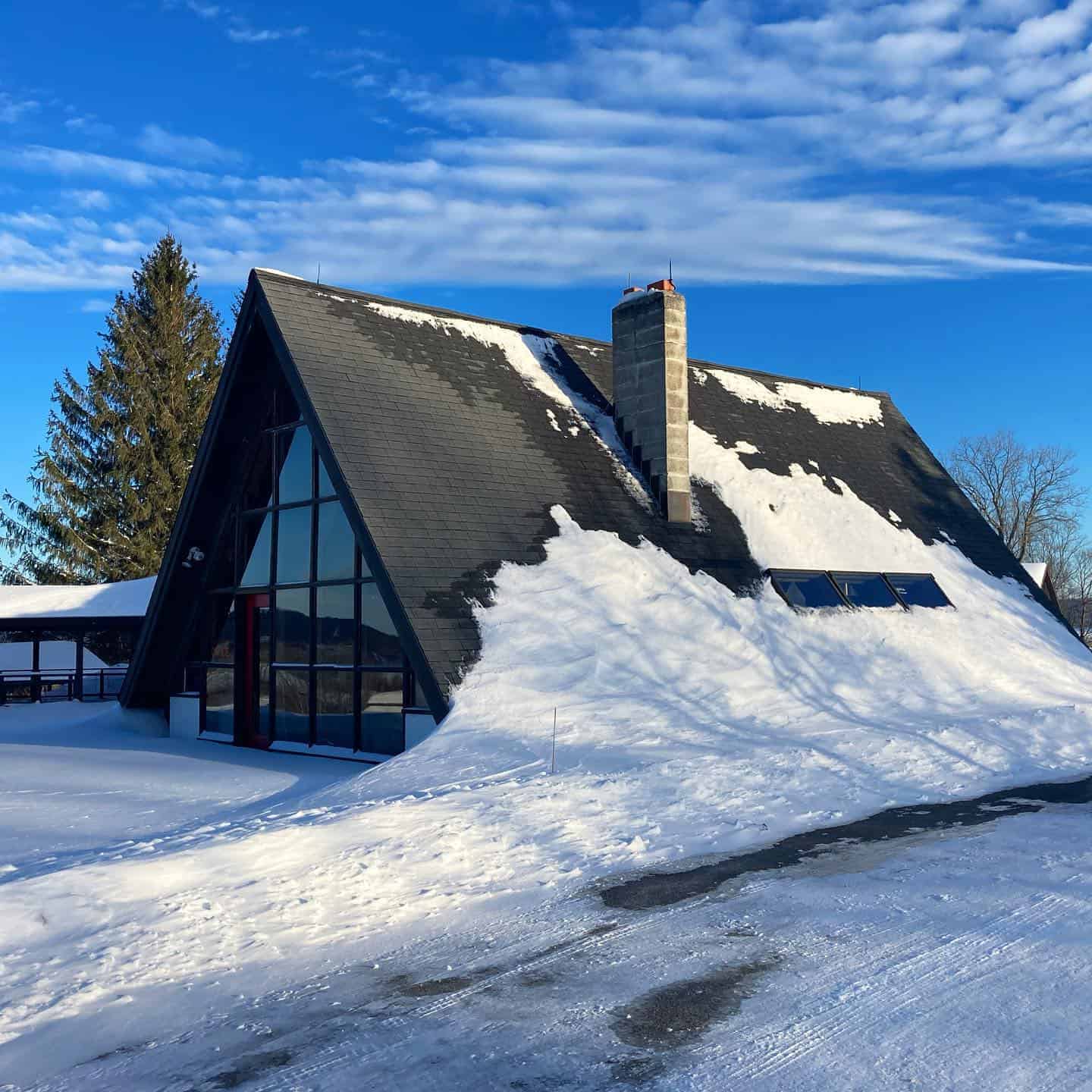
The Hilltop House at Stone Quarry Art Park was built in the 1960s by the Art Park’s founder, Dorothy Riester.
Zaengle and Schoonmaker decided to use this opportunity to showcase one of their 2022 visiting artists. “Even the display case becomes a microcosm of the Art Park experience,” says Zaengle. “We can’t measure the impact seeing art in that display case might have on the hundreds of daily visitors to the Madison County office building, instead we accept that art should be everywhere, we should see art as we wait in line at the DMV. Instead we focus on measuring what we can: the opportunity, compensation, and visibility that we have created for that artist.”

Visiting artist Anna Ialeggio atop one of her exhibits at the Stone Quarry Art Park in Cazenovia, NY.
Alongside the question of how best to support their artists, Stone Quarry’s leadership must remain conscious of their own capacity. “This is a nonprofit – we provide services to people,” says Schoonmaker. “But we are people too. We intuitively feel when the organization is operating at its capacity, and we intuitively feel when it goes beyond its capacity.” If the staff is operating over capacity, she explains, this directly impacts the health of the organization and those attached to it – especially the artists. “We have had to get comfortable to saying no to opportunities that don’t answer the question of how this project advances or supports the visiting artist program.”
Drawing inspiration from their founding story, Zaengle and Schoonmaker aim to carry on the spirit of the Art Park’s founder – Dorothy Riester.
“She created a space that was different and that gave other people permission to think differently, to question things, to have fun,” says Zaengle. “More than celebrating Dorothy as an individual, it’s that idea that we want to carry forward: Stone Quarry is different, unique, contemporary, and relevant because of our artists’ art. Our job is to continue to provide public access to that.”
